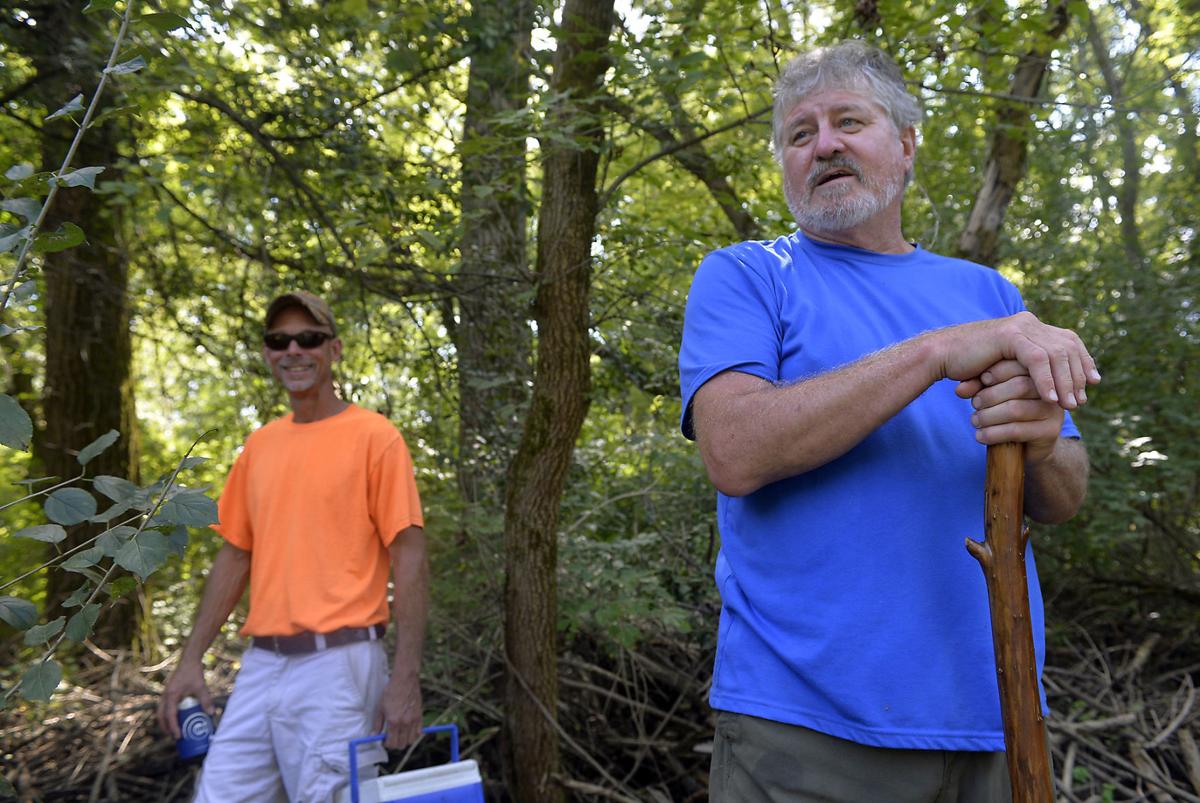There’s nothing I like better than a good beaver mystery. I’m never happier than I am when I finally puzzle out the nutria living in the woman’s swimming pool, the groundhog in Wilbur’s backyard, or the Capybara visiting the water treatment plant.
But this surprised me. A sea-lion/beaver between the Mohave desert and San Bernadine in a salt water lake.
This Desert Life: The beast in Spring Valley Lake
 A 50-pound mystery surfaced in March 1987 after a resident spotted a sea lion swimming in Spring Valley Lake’s shallow depths.
A 50-pound mystery surfaced in March 1987 after a resident spotted a sea lion swimming in Spring Valley Lake’s shallow depths.
Gossip filled the community as word of the unlikely guest spread, eventually resulting in 15 eyewitness accounts that made a concerned believer out of Karin Wyman.
Wyman was curator of the Laguna Beach-based nonprofit Friends of the Sea Lion (now the Pacific Marine Mammal Center), and interviews with residents convinced her of three things: the sea lion was a 10- to 11-month-old pup. It had been illegally captured and dumped in the 200-acre lake. And it was sick.
“Whoever caught it and brought it here couldn’t have approached it unless it was sick or injured,” Wyman said, adding that sea lions tout a bite four times stronger than any dog.
 Equipped with nets and a fishing boat, Wyman and colleague Don Burns embarked on a weeks-long search for the mammal. Meanwhile, if caught, the culprit faced jail time and a $20,000 fine per the Marine Mammal Protection Act signed by President Nixon in 1972.
Equipped with nets and a fishing boat, Wyman and colleague Don Burns embarked on a weeks-long search for the mammal. Meanwhile, if caught, the culprit faced jail time and a $20,000 fine per the Marine Mammal Protection Act signed by President Nixon in 1972.
But there was a problem. Amid the search, willow and cottonwood trees began falling around the lake, their trunks gnawed nearly in half.
Joel M. Shows, a trapper for the U.S. Department of Agriculture, surveyed the damage and reviewed footage of the purported sea lion swimming. His conclusion was the saltwater mammal was, in fact, a rather large beaver that had wandered over to the man-made lake from nearby Mojave Narrows.
If there existed talk of a beaver being less likely than a sea lion, it was quelled by State Department of Fish and Game warden Dick Phillips, who said beavers weren’t so unusual in the arid High Desert.
Whoa. It’s either a very confused sea lion OR a beaver. And hey why are they calling an elevation of 2700 feet “High Desert“. Does that mean the top of Mt. Diablo is high desert? Hmm, maybe they’re referring to the population, not the landscape. Well a nonprofit in Laguna Beach got involved and did some sleuthing of their own. But fish and game said it wasn’t any marine mammal.
It’s an ongoing problem around here, especially in Spring Valley Lake, Oro Grande and (Lake) Arrowhead,” Phillips said. “Beavers are not native to the area. They were introduced.”
By Phillips estimation, beavers were imported to the region in the 1940s, and — as an example of their prevalence — he noted that six had recently been “taken,” including a 110-pounder in Oro Grande.
The solution was permits Phillips issued to Shows — who had experience trapping bears and mountain lions — and Spring Valley Lake officials that allowed for the beaver to be shot on sight.
Death was preferable to a tranquilizer because, according to Shows, “If you dart him, he’ll go under and drown before you can get to him.”
And so the beaver’s fate was presumably sealed. But there was another problem. No one — not even Phillips — had actually seen the beaver on land. And glimpses of it swimming in the lake didn’t exactly dispel the sea lion theory.
Complicating matters was the discovery of 30-pound catfish in the lake that had been bitten in two; Daily Press writer Bruce Snyder noted in his reportage, “Sea lions dine on fish, while beavers are vegetarians.”
“Normally, I’d say that it (the sea lion) is probably a beaver,” Phillips said after the gruesome find. “But around here, anything can happen.”
Wyman and Burns stuck to their belief that the animal was a displaced sea lion and then Spring Valley Lake administrator Bernie Wagner agreed.
Wyman called off the search, saying she wouldn’t come back unless there was solid proof of the sea lion’s existence. Still, even with the beaver identified, a creeping doubt nagged her.
“The only thing that makes me wonder is that we talked to people who say they saw a (sea lion) and say they saw the front flippers and things,” Wyman told the Sun. “Beavers don’t eat fish.”
Be that as it may, the sighting allowed the hunt to commence via Phillips’ permits. But a hunt never occurred because Spring Valley Lake officials declined to use them.
The stated reason: the beaver had disappeared.
Ooooh, tell me another one grandpa! That made me shiver in the nicest way. The actually funny thing about this is the story happened in 1989, just around the time beavers were trapped out of Lake Skinner 90 miles away in Riverside County. This of course led to the Friend’s of Lake Skinner case and the lawsuit that was won at the appellate level for trapping out beaver without a CEQA analysis. Now I can’t exactly see how a beaver would get from point A to point B, but it sounds from this article like they were doing a fair amount of trapping at the time, which is pretty interesting because it explains where those beavers might have come from.
Another Beaver Mystery Solved.

















 Eyewitness accounts support the claim that vandalism was involved. Maria Roberts, a Forest Service employee, was hiking with friends in mid-July when she saw a man pulling sticks out of the dams.
Eyewitness accounts support the claim that vandalism was involved. Maria Roberts, a Forest Service employee, was hiking with friends in mid-July when she saw a man pulling sticks out of the dams. “When they come up streams and have to build dams to get two and a half feet [of water to build their lodges], there is then a whole cascade of effects that happen,” O’Brien said. “Streams are often incised from grazing, from long-ago blow-outs of cattle ponds, from floods and so on and really the only thing that can restore that stream is basically woody debris … beaver are the chief engineers that do that.”
“When they come up streams and have to build dams to get two and a half feet [of water to build their lodges], there is then a whole cascade of effects that happen,” O’Brien said. “Streams are often incised from grazing, from long-ago blow-outs of cattle ponds, from floods and so on and really the only thing that can restore that stream is basically woody debris … beaver are the chief engineers that do that.” dary cavity nesters who use the holes of cavity nesters,” O’Brien said. “[The] water behind the pond is a great nursery for fish. And then of course otter can come into the system because there’s fish. And muskrats are there. And water voles are there, so one thing that the beavers do is make the system far more complex. Without beaver, in a lot of, say, your mountains here, it’s a just strip of water coming through and there’s trees on either side.”
dary cavity nesters who use the holes of cavity nesters,” O’Brien said. “[The] water behind the pond is a great nursery for fish. And then of course otter can come into the system because there’s fish. And muskrats are there. And water voles are there, so one thing that the beavers do is make the system far more complex. Without beaver, in a lot of, say, your mountains here, it’s a just strip of water coming through and there’s trees on either side.” Arne Hultquist, director of the Moab Area Watershed Partnership, agreed that beavers are not the cause of E. coli in Mill Creek. “If I was having problems with beavers and E. coli, I would be seeing it at that site [above the Power Dam] and I don’t see it at that site. I see it down in town,” said Hulquist, who conducts water quality tests at various points around Moab.
Arne Hultquist, director of the Moab Area Watershed Partnership, agreed that beavers are not the cause of E. coli in Mill Creek. “If I was having problems with beavers and E. coli, I would be seeing it at that site [above the Power Dam] and I don’t see it at that site. I see it down in town,” said Hulquist, who conducts water quality tests at various points around Moab.
 Marty Johnson, wildlife biologist with the State Department of Natural Resources, confirmed that the beaver population is increasing.
Marty Johnson, wildlife biologist with the State Department of Natural Resources, confirmed that the beaver population is increasing. end it beyond the edges of the trail. The beaver doesn’t go near it.”
end it beyond the edges of the trail. The beaver doesn’t go near it.”




































